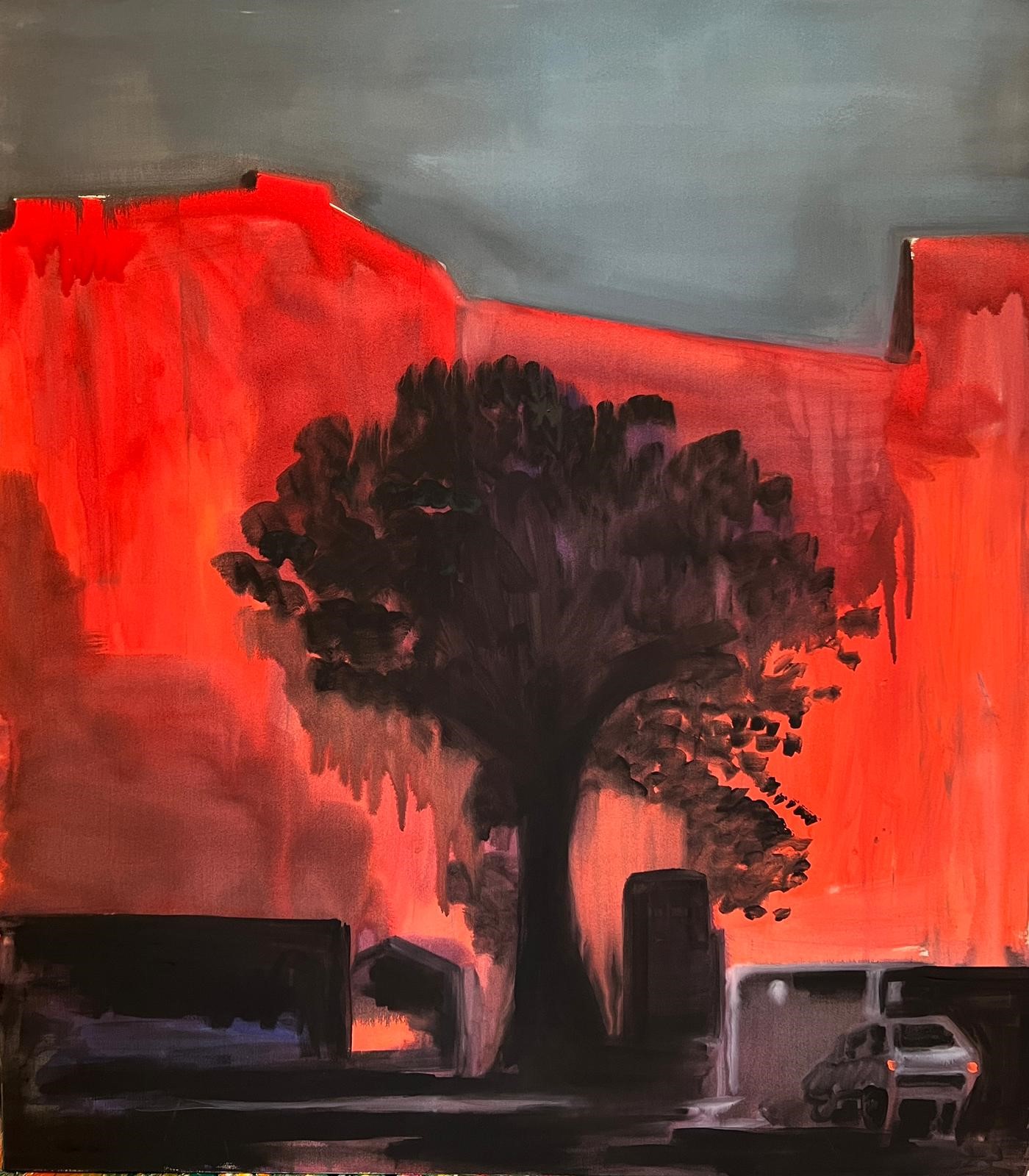
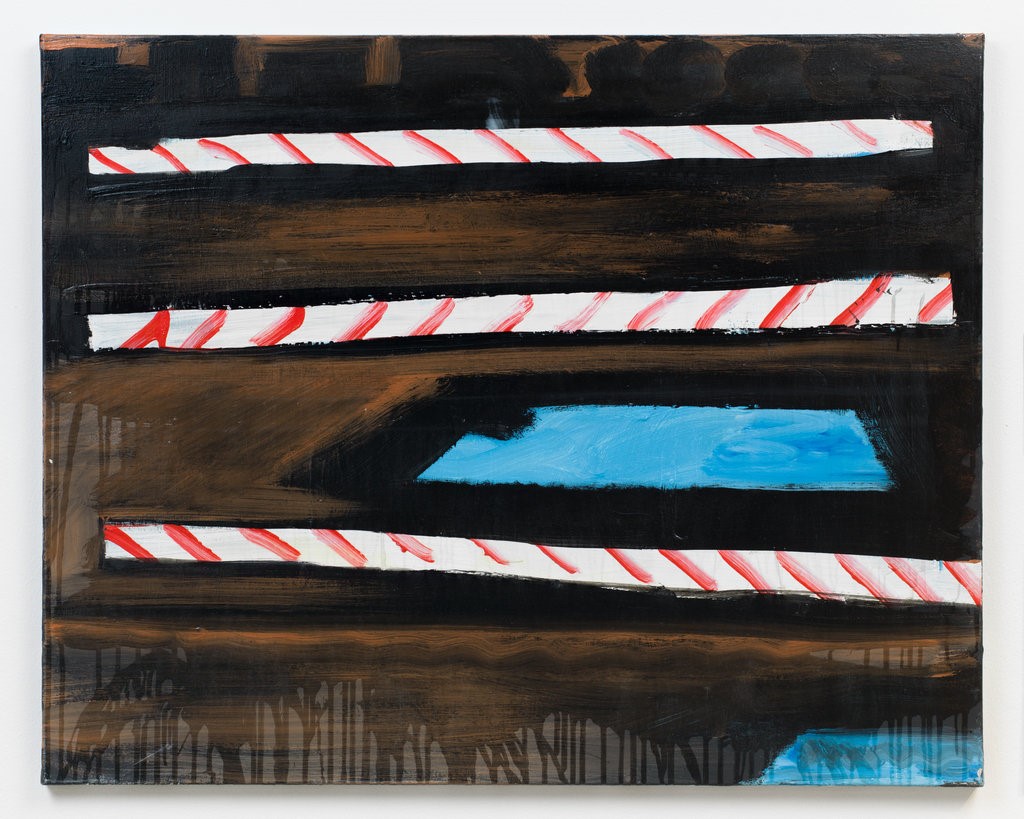
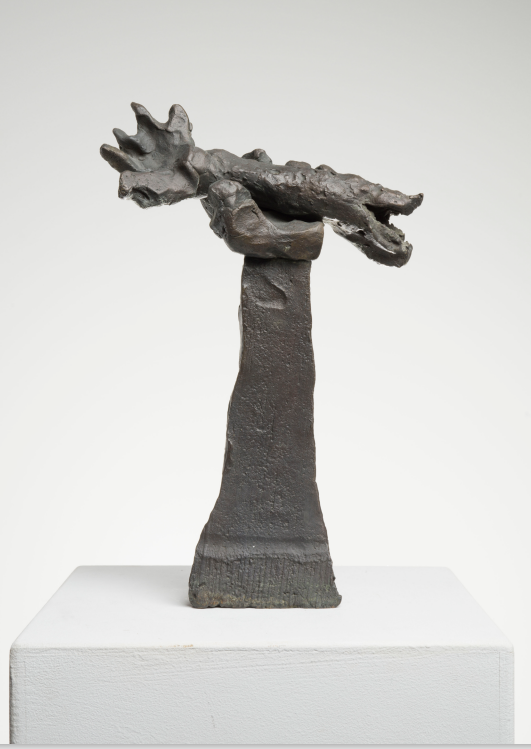
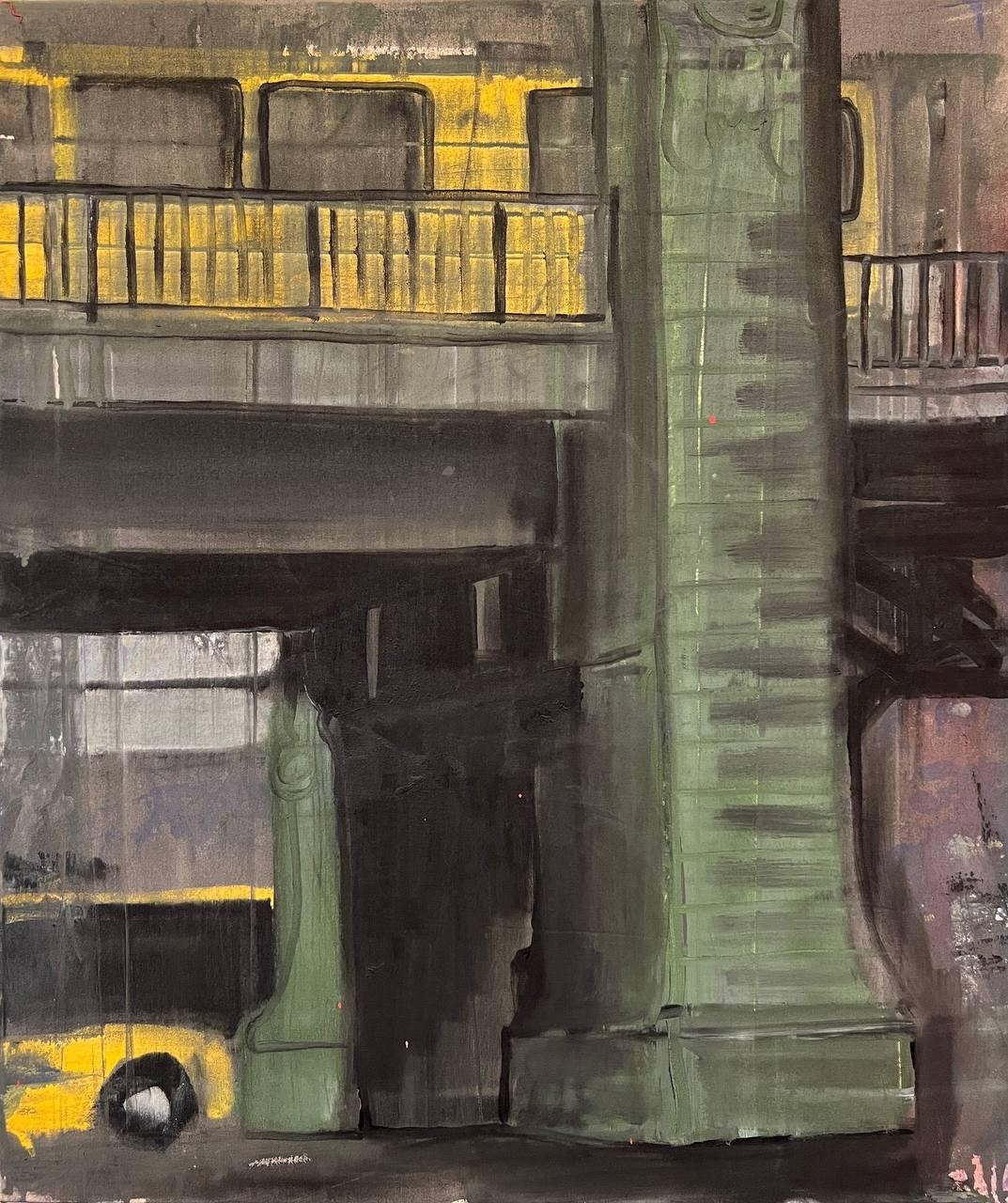
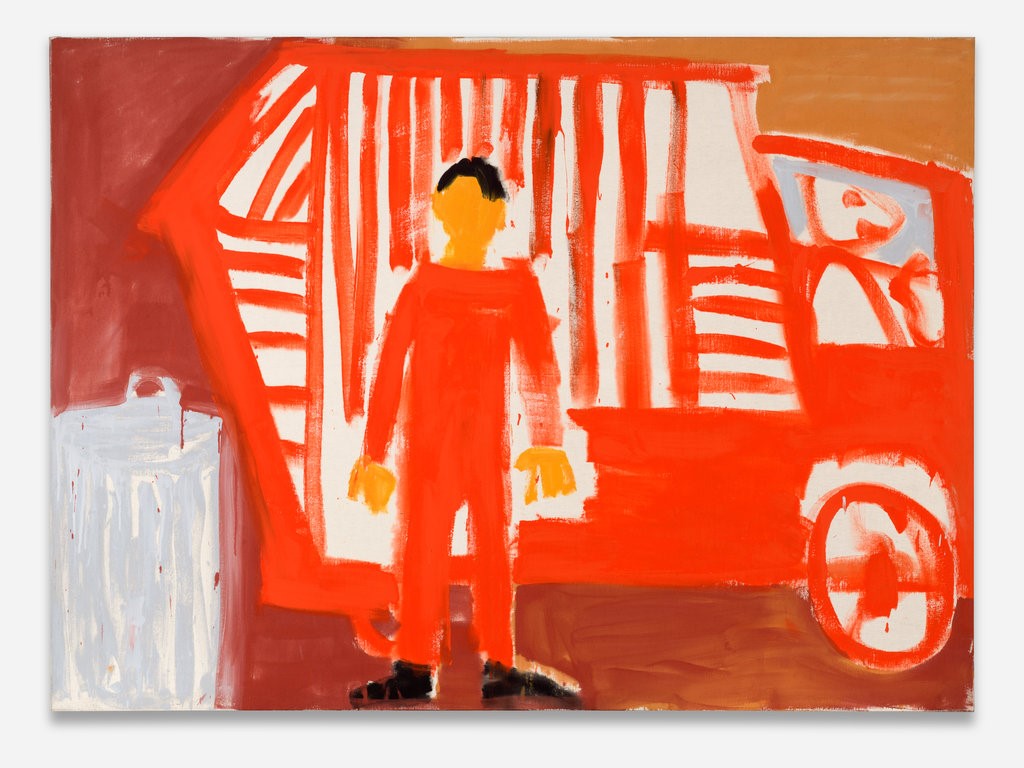

As a space of constant change and an interface between the public and private spheres, Berlin's streets form a multi-layered place in which the history of the city and its open future find intense expression. With Jonas Hödicke (*1984) and Karl Horst Hödicke (*1938), Noack Galerie presents two artists from different generations in a joint exhibition, who appropriate the urban theme in related yet different ways in their artistic work. The exhibition includes sculptures cast in the Noack foundry, paintings and drawings - which, when shown together, open up new perspectives on the work of both artists.
When, in the 1960s, painterly abstraction set the international tone in art, it was Karl Horst Hödicke who, together with a small group of artists, rebelled against this development and paved the way for a new figuration. At a time when Tachism, Art Informel and Abstract Expressionism dominated German post-war modernism, his pictorial worlds were almost provocatively realistic. Often brightly colored and full of dynamism and energy, his pictorial compositions appear abstract in their forms reduced to the essentials, but always lead to representationalism. Together with Georg Baselitz, Jörg Immendorf and A.R. Penck, he became a pioneer of New Figuration and Neo-Expressionism. As a professor at the Berlin University of the Arts, where he was a professor since 1974 and where artists such as Salomè and Helmut Middendorf studied under him, he is an important stimulus for the Neue Wilde.
Karl Horst Hödicke has lived in Berlin since 1957, experiencing the city's eventful history and incorporating it as a central motif in his paintings and sculptures. Since the 1970s, he has worked in his studio in Dessauer Straße on Potsdamer Platz, an area where Berlin's historical upheavals are particularly visible in the cityscape. His son Jonas Hödicke took over the studio space in Dessauer Straße in the 00s. After studying at the Düsseldorf Art Academy under Markus Lüpertz and Siegfried Anzinger, he moved back to his native city. The studio thus becomes the interface between the two artists as a location and perspective.
In his early days, Jonas Hödicke mainly worked sculpturally. His figures cast in bronze bear witness to a restless dynamism. Potential movements, frozen in the sculptures, refer to the exploration of spatial aesthetic concepts. The sprue systems still found on some sculptures, which are replaced by bronze during the lost wax casting process and are normally sawn off the sculpture afterwards, reveal a fascination for the processual.
Jonas Hödicke's paintings reveal an ongoing exploration of the medium of painting and its history. In terms of painting, he certainly draws on the traditions of his father's generation, but always develops his own approach and reinvents the oscillation between abstraction and figuration. The results are paintings that seem familiar in their motifs, but always imply a break in their complexity of color and structure. His motif-compressed Berlin subjects appear harmless on the surface, but at the same time evoke an unease that allows an ambivalent perspective on the city to shine through. Jonas Hödicke, who spent his childhood and youth in Berlin and got to know all social milieus through his penchant for rebellion and constant changes of school, does not only associate positive things with the city.
In the joint exhibition of the two artists, interfaces and major differences become visible. The reference to the city of Berlin remains a common constant. However, it also becomes clear that neither Karl Horst Hödicke nor Jonas Hödicke can be seen as mere chroniclers of Berlin. It is a fascination for the energy of the city's constant transformation that unites them both and manifests itself in their works in different ways.
We look forward to see you in the exhibition:
Monday to Thursday 12 to 5 p.m.; Friday 12 to 6 p.m.
The artists: Jonas Hödicke | Karl Horst Hödicke